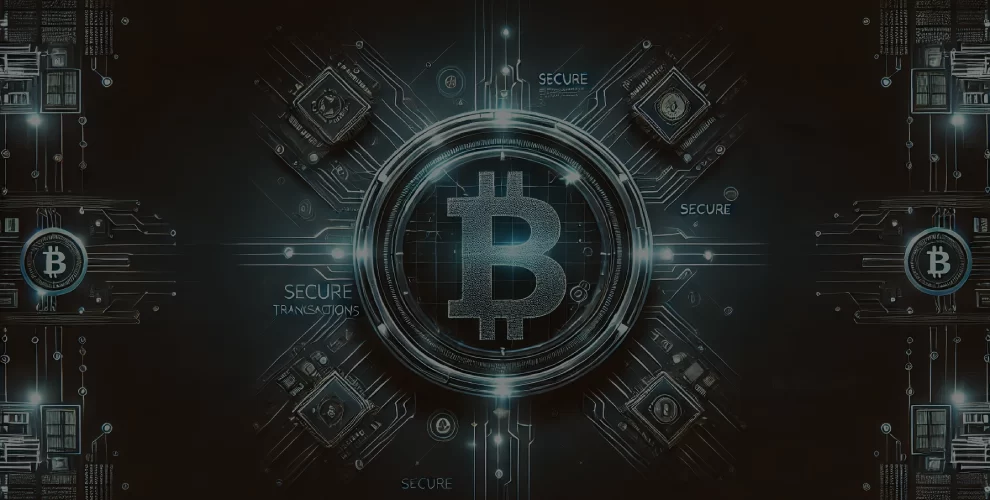
Crack the Blockchain Code: 5 Essential Concepts Explained
Table of Contents
Introduction
Welcome to WikiGlitz!
Blockchain technology is rapidly reshaping the digital landscape, but for many, the concepts behind it can seem complex and intimidating.
Whether you’re new to blockchain or looking to deepen your understanding, this guide will explain five essential blockchain concepts in simple, straightforward terms.
Let’s crack the blockchain code together!
Key Takeaways
- Understanding Blockchain: Learn the foundational concept of blockchain as a decentralized, secure digital ledger and how it works, including its structure, cryptographic hashing, and consensus mechanisms.
- Smart Contracts and dApps: Discover how smart contracts automate and enforce agreements on the blockchain, and how decentralized applications (dApps) operate on blockchain networks, offering more security and transparency.
- Scalability Challenges and Solutions: Explore the challenges of blockchain scalability and the solutions like Layer 2 technologies and sharding that are being developed to enhance blockchain performance.
What is Blockchain?
At its core, blockchain is a digital ledger—a record book that securely stores information across a network of computers.
- Digital Ledger: Think of it as an electronic notebook that records transactions or data entries. Unlike traditional databases, blockchain entries are grouped into blocks.
- Decentralization: Instead of being stored on a single server or database, blockchain data is distributed across many computers (nodes) globally. This decentralized structure makes it highly secure and resistant to tampering.
- Chain of Blocks: Each block in the blockchain contains a list of transactions. Once a block is filled, it is linked to the previous block, forming a continuous chain.
How Does Blockchain Work?
Understanding how blockchain works involves grasping a few key components and processes.
Transactions and Blocks
- Transaction: Whenever data is added to the blockchain (e.g., a cryptocurrency payment), it creates a transaction. Each transaction is recorded and grouped with others to form a block.
- Block Creation: Blocks contain a collection of transactions. Once a block is created, it is verified by the network through a consensus mechanism.
Consensus Mechanisms
Consensus mechanisms are the processes by which the network agrees on the validity of transactions.
- Proof of Work (PoW): In PoW, computers (miners) solve complex mathematical problems to validate transactions and create new blocks. This process is energy-intensive but ensures security.
- Proof of Stake (PoS): In PoS, validators (who hold a stake in the network) are chosen to create new blocks based on the amount of cryptocurrency they own.
Cryptographic Hashing
- Hashing: Each block has a unique identifier called a hash, generated through a mathematical function. Hashing ensures that even a small change in the block’s data creates a completely different hash, making tampering easily detectable.
Smart Contracts: Self-Executing Agreements
Smart contracts are one of the most revolutionary applications of blockchain technology.
What Are Smart Contracts?
- Self-Executing Contracts: Smart contracts are digital contracts that automatically execute and enforce the terms of an agreement when predefined conditions are met.
- Immutable and Transparent: This immutability ensures that the terms of the agreement are executed as intended, without the need for intermediaries like lawyers or banks.
How Do Smart Contracts Work?
- Coding the Agreement: The terms of the contract are written in code and deployed on the blockchain.
- Triggering Execution: When the conditions specified in the contract are met (e.g., a payment is received), the contract automatically executes the agreed-upon actions (e.g., transferring ownership of a digital asset).
Real-World Applications
- Finance: Automating loan agreements, insurance claims, and complex financial transactions.
- Supply Chain: Tracking the movement of goods and ensuring the authenticity of products.
- Real Estate: Facilitating property transactions and automatically transferring ownership once payment is made.
Decentralized Applications (dApps): Beyond Traditional Software
Decentralized Applications, or dApps, are applications that run on blockchain networks rather than centralized servers.
What Are dApps?
- Decentralized Infrastructure: Unlike traditional apps that rely on a central server, dApps operate on a peer-to-peer network of computers (nodes). This decentralization ensures that the application is more secure and resistant to censorship.
- Open Source: Most dApps are open source, meaning their code is publicly available and can be audited by anyone. This transparency builds trust among users.
How Do dApps Work?
- Blockchain-Based: dApps use blockchain for data storage and smart contracts for logic execution.
- Tokens and Incentives: Many dApps have their own tokens, which can be used within the application or traded on cryptocurrency exchanges.
Examples of dApps
- Cryptocurrencies: Bitcoin and Ethereum themselves are examples of dApps, facilitating decentralized financial transactions.
- DeFi (Decentralized Finance): Platforms like Uniswap and Aave allow users to trade, lend, and borrow digital assets without intermediaries.
- Gaming: Games like CryptoKitties use blockchain to create and trade unique digital assets (NFTs).
Blockchain Scalability: Overcoming the Limitations
While blockchain offers many benefits, it also faces challenges, especially in terms of scalability.
What is Scalability?
- Definition: Scalability refers to the ability of the blockchain network to handle an increasing number of transactions without compromising performance.
- The Scalability Trilemma: Blockchain developers often face a trade-off between decentralization, security, and scalability. Improving one aspect can often weaken the others.
Solutions to Blockchain Scalability
- Layer 2 Solutions: Techniques like the Lightning Network (for Bitcoin) or Plasma (for Ethereum) create secondary layers that process transactions off the main blockchain, reducing congestion.
- Sharding: Sharding divides the blockchain into smaller, more manageable pieces (shards), each of which processes a portion of the transactions. This parallel processing can significantly improve throughput.
- Consensus Mechanism Upgrades: Newer consensus algorithms, like PoS, are designed to be more scalable than traditional PoW systems.
Conclusion
By understanding these five essential concepts—what blockchain is, how it works, the role of smart contracts, the potential of dApps, and the challenges of scalability—you’ll be better equipped to navigate and leverage this revolutionary technology.
WikiGlitz is here to help you stay informed and ahead of the curve in the ever-evolving world of blockchain.
FAQs
What is blockchain in simple terms?
Blockchain is a digital ledger that records transactions securely across a decentralized network of computers.
How do smart contracts work?
Smart contracts are self-executing contracts where the terms are coded and automatically executed when predefined conditions are met.
What are dApps?
dApps are decentralized applications that run on blockchain networks, offering more security and transparency compared to traditional apps.
What is blockchain scalability?
Scalability refers to the ability of a blockchain network to handle more transactions as it grows, often addressed through techniques like Layer 2 solutions and sharding.
What are the benefits of blockchain technology?
Blockchain offers enhanced security, transparency, and efficiency, making it a powerful tool for various applications, from finance to supply chain management.
Want to keep up with our blog?
Our most valuable tips right inside your inbox, once per month.
Error: Contact form not found.
WikiGlitz Team
Welcome to WikiGlitz, your ultimate destination for tech insights and innovation. Our expert team is dedicated to delivering free resources and professional advice on various technology topics, including Artificial Intelligence, Cyber Security, Cloud Computing, and more. We strive to empower our readers with up-to-date information and practical guidance, ensuring you stay ahead in the rapidly evolving tech landscape. At WikiGlitz, we are passionate about making complex technology accessible to everyone. Our team of seasoned experts curates content that is both informative and engaging, helping you understand and leverage the latest tech trends. Whether you're a tech enthusiast or a professional, WikiGlitz is your go-to source for reliable, expert-driven content. Join us on this journey to explore and embrace the future of technology.





